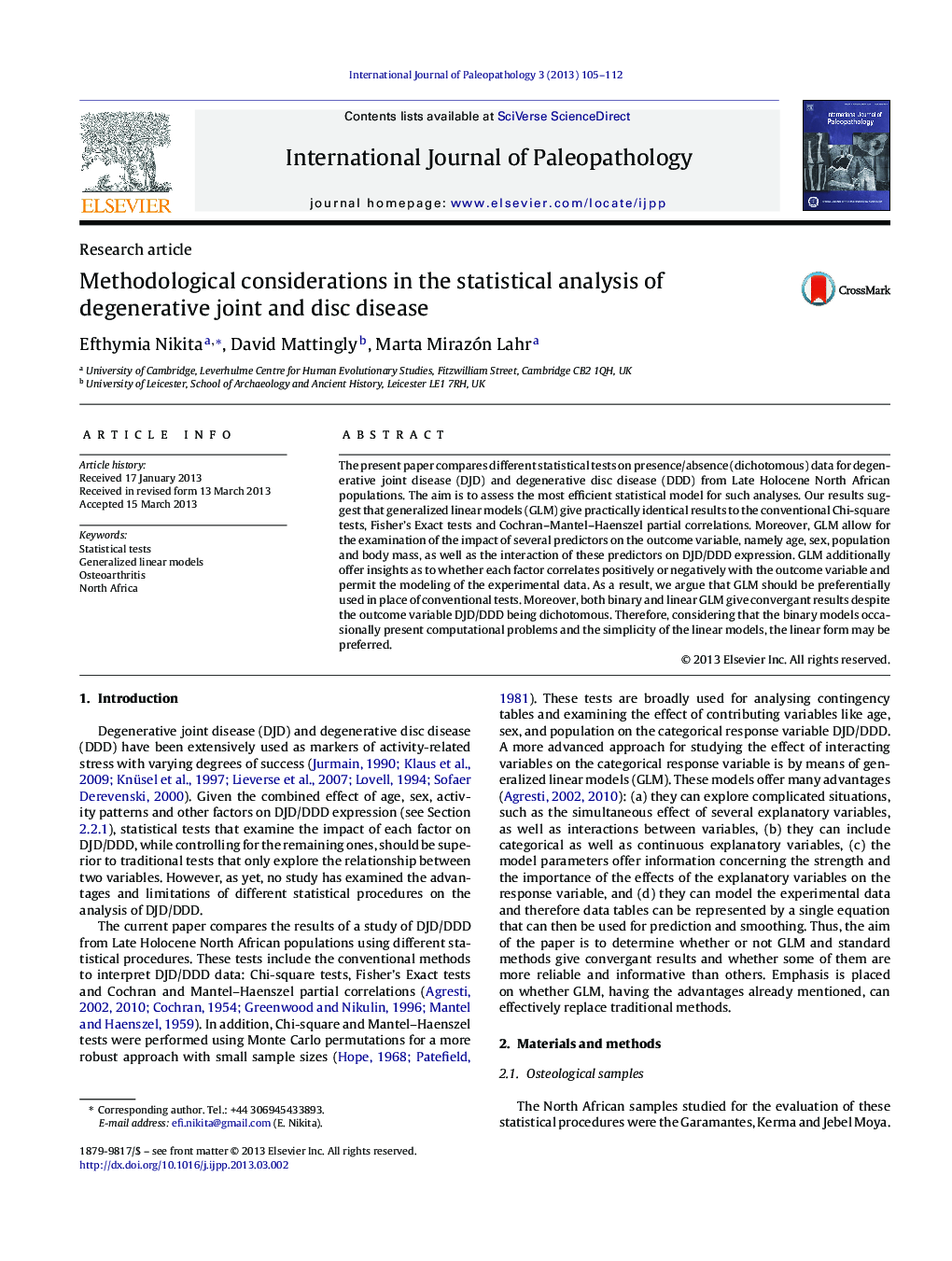| Article ID | Journal | Published Year | Pages | File Type |
|---|---|---|---|---|
| 101436 | International Journal of Paleopathology | 2013 | 8 Pages |
•Comparison of statistical methods for degenerative joint disease (DJD) and degenerative disc disease (DDD) analyses.•Generalized linear models (GLM) results converge with those of conventional statistical tests.•GLM are advantageous as they can handle multiple variables and their interactions.•The GLM binomial model may present computational problems that can be overcome using permutations.•The GLM binomial and linear models give convergant results.
The present paper compares different statistical tests on presence/absence (dichotomous) data for degenerative joint disease (DJD) and degenerative disc disease (DDD) from Late Holocene North African populations. The aim is to assess the most efficient statistical model for such analyses. Our results suggest that generalized linear models (GLM) give practically identical results to the conventional Chi-square tests, Fisher's Exact tests and Cochran–Mantel–Haenszel partial correlations. Moreover, GLM allow for the examination of the impact of several predictors on the outcome variable, namely age, sex, population and body mass, as well as the interaction of these predictors on DJD/DDD expression. GLM additionally offer insights as to whether each factor correlates positively or negatively with the outcome variable and permit the modeling of the experimental data. As a result, we argue that GLM should be preferentially used in place of conventional tests. Moreover, both binary and linear GLM give convergant results despite the outcome variable DJD/DDD being dichotomous. Therefore, considering that the binary models occasionally present computational problems and the simplicity of the linear models, the linear form may be preferred.
